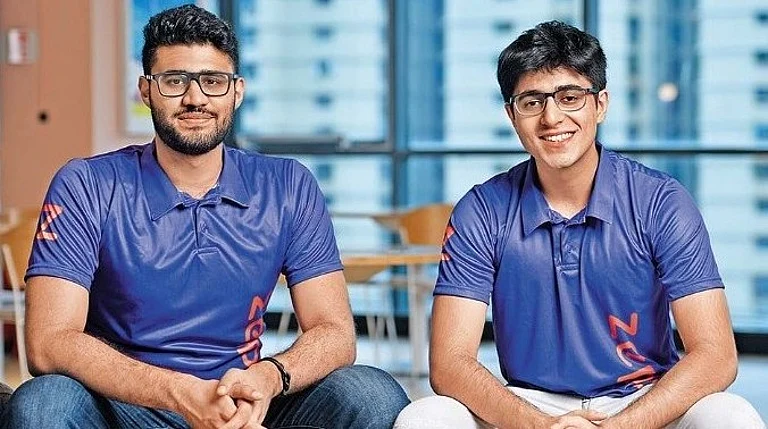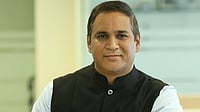While the quick commerce expanded quickly in the market, its recipe for success is leaving a sour taste for investors. Giants like Swiggy, Zomato, and Zepto are betting big on growth through quick commerce expansion. But their spending to stay competitive in the market may look worrisome to investors.
Industry experts told Economic Times that Indian quick commerce companies including new entrants are burning cash to nearly Rs 1,300-Rs 1,500 crore on monthly basis. The number reveals how rapidly a company spends its money before generating positive cash flow. Now, the question arises: How these new-age companies are burning cash in the era of convenience?
Their stock price, quarterly results, and heavy expenses in operations will tell the story.
Stock Price & Market Cap
Since January 2025, Swiggy’s share price have plunged around 30% to Rs 341.60, while Zomato’s shares have fallen down nearly 10% to Rs 216.44 till the date on national stock exchange. Swiggy, which went for IPO last November, even touched its all-time low of Rs 326.20 on February 12. The food delivery platform’s shares were listed at Rs 420 when it went public on the stock exchanges.
This has led a huge decline in the new-age companies’ valuations --- Swiggy witnessed over 30% decrease in its market cap to Rs 827.73 billion, and Zomato’s valuation was down by more than 20% to 1,973.95 billion from December 31, 2024 to February 13, 2025.
Expansion Spending
Swiggy and Zomato have been spending more on their quick commerce arms ‘Instamart’ and ‘Blinkit’, respectively, to compete with Zepto --- which raised over a billion dollars in funding last year. Apart from Zepto, ecommerce giants Amazon and Flipkart have also joined the 10-minute delivery race and launched their own quick delivery platforms, i.e., Tez and Minutes. The newcomers were coming in and the money was going out.
To stand strong and face the heated competition, both Swiggy and Zomato aggressively expanded their dark store networks, with Blinkit opening new 216 stores and Instamart setting up 96 at various locations. They even brought heavy discounts to attract customers and added more product categories like clothing, personal electronics, beauty, fashion, among others.
On the other hand, the IPO-bound Zepto has also expanded its network in tier 2 cities, and currently operates over 600 dark stores across the country. Reportedly, Zepto CEO Aadit Palicha has plans to increase the dark store number to 1,200 by March 2025.
As per reports, the company has burned around Rs 250 cash per month in October and November due to the increase in expenses. The start-up has made a huge investment in operations, marketing and customer acquisition.
Q3 Results
Both Swiggy and Zomato reported a slowdown in the growth of their core food delivery business. Deepinder Goyal-led Zomato reported a GOV of Rs 9,690 crore for the December quarter, up 17% year-on-year (Y-o-Y) but just 2.3 percent compared to the previous quarter. During the same time period, Blinkit’s contribution margin dropped from 3.8% to 3% on a YoY basis in the overall business.
Its rival Swiggy showed similar trend for the third quarter. The Bengaluru-based firm reported a GOV (gross order value) of Rs 7,436, around 19.2% year-on-year (YoY) growth but its GOV grew 3.4% as compared to previous quarter. The major reasons behind growth slowdown can be consumption slowdown and the food delivery companies’ big spend on quick commerce segments.
Q-Comm Reality Check
While the government has given a boost to consumption in Budget 2025, industry experts stated that the quick commerce business is still in its nascent stage. HDFC Securities said, “While the space is well-capitalised, it is likely to see a supply glut (of dark stores) by the end of FY26/27, as many players in this land grab phase overshoot the opportunity, thereby diluting order density. Beyond top cities, let’s be realistic—quick commerce is still an experiment.”
It stated that quick commerce companies have managed to improve their unit economics by efficiently aggregating demand, leading to higher GOV density. With a cash reserve of around Rs 420 billion, they have the potential to scale towards profitability. However, investors may be overestimating the market opportunity.
Currently, the market projections for FY25-27 suggest a 25-30% gap between expected and realistic sales estimates, meaning expectations might actual demand in top cities.
“Management believes growth could slow down for the industry as a whole despite the recent consumption push. n We do not foresee a meaningful acceleration in the FD business in the near term at the GOV level, as we believe Bolt and 10-minute food delivery could lead to lower Average order value (AOV) growth too,” said Motilal Oswal.
Aggressive expansion, slow growth, and deep cash burns --- the current picture of quick commerce companies raises questions on its long-term viability. With Zepto also set to launch its IPO this year, the next few quarters will be telling whether quick commerce cements itself as a game-changing business model or becomes another cautionary tale in the Indian start-up ecosystem.






























